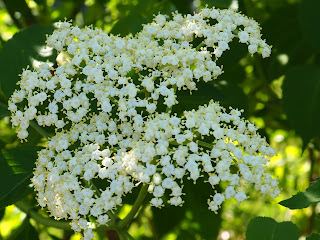In addition to a few early blooming natives, I was surprised to observe non-native species, including periwinkle and fig buttercup at the Preserve. Invasive species and garden escapes gain a competitive advantage over natives, emerging earlier than other species and overtaking the area with dense mats of growth. They are difficult to eradicate.
Although Ficaria and Vinca can attract pollinators, native species such as the wetland marsh marigold are better adapted to pollination. Consider planting more natives in your yard to sustain the flora and fauna of the ecosystem and support the Green Corridor Initiative! The Land Trust plans to re-integrate more early-blooming native species into the preserve next spring.
 |
Marsh marigold (Caltha palustris) looks similar to Ficaria but
attracts flower flies and honey bees without the invasive tendencies |
 |
The invasive fig buttercup (Ficaria verna) forms dense mats
in early spring |
 |
| Periwinkle (Vinca minor) is a garden escape |
 |
Purple dead-nettle (Lamium purpureum) is a nectar source
for long-tongued bees in early spring |







Comments
Post a Comment